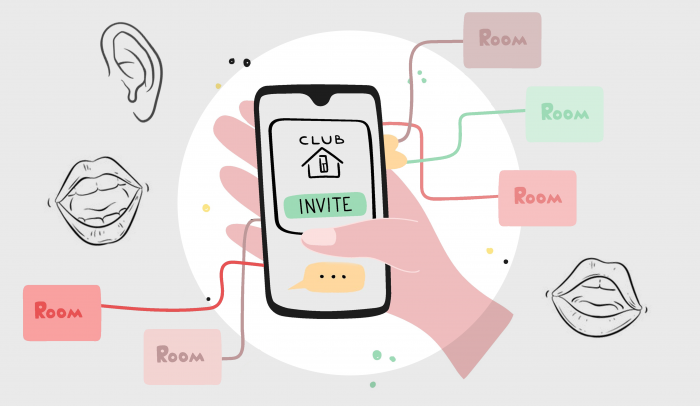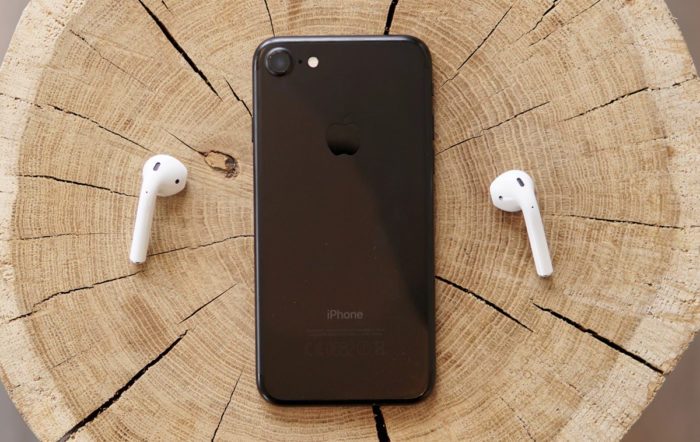This is our second piece on the Clubhouse app. Want to start with the basics? Click here.
It’s not just moguls like Elon Musk who have amassed huge, eager audiences on Clubhouse. Under-the-radar creators have the ability to establish themselves as experts, too. Rooms like “The Startup Club,” for example, are shining the light on small business owners to share their success stories (and gain clients while doing so).
No matter the type of work you do or the community with which you’re trying to connect, Clubhouse gives you the opportunity to do it—so long as you don’t have an Android.
Talking the talk
For marketers, Clubhouse rooms are opportunities to target potential customers based on their interests. By hosting or speaking up in conversations with people already interested in a specific niche, brands can position themselves as industry leaders and establish trust with consumers in a more casual, informal way.
While executives are the obvious spokespeople for their companies, some brands are sending employees as envoys to act as ambassadors to infiltrate rooms in the hopes of gaining an audience. Some are already turning to influencer marketing, from asking influencers to name-drop their products in rooms, to sponsoring rooms with high-profile guests.
Digiday reported that Martell, a cognac brand and subsidiary of Pernod Ricard, partnered with global marketing content creator Karen Civil to host rooms for conversations with notable Black female entrepreneurs to mark Black History Month. “By partnering with an influencer to connect with consumers on Clubhouse, we are able to leverage the built-in Clubhouse community and invite new users to participate authentically via our influencer partners’ reach,” said Izzy Hussein, a senior brand manager at Martell.
However, not everyone is convinced that influencer marketing is the way to go. Duncan Fulton, chief communications officer of Restaurant Brands International, suggested that paid advertising “may take away from the transparency and authenticity the app’s users have embraced.” It’s a delicate balance—brands want to participate in the newest thing, without stepping on toes or alienating their audiences—and it’s making marketers rethink their approach to social media in general as Clubhouse changes the landscape.
Adapting to the Changing Face of Social Media
So while influencer-marketing as we know it feels gauche on Clubhouse, what is emerging is reminiscent of the micro-influencer resurgence happening in other corners of social media—people want to hear from people like them. Clubhouse presents an opportunity for marketers to be more covert with their partnerships again.
The set-up of the app itself helps them to do that. In a world built around algorithms, Clubhouse resists them—for now, at least. To a certain extent, the Clubhouse homepage is personalized to your interests, but everyone sees the same trending rooms. If a room gets on the homepage, anybody who has the app open can find it easily.
“The ability to spontaneously drop in and out of rooms like these, and toggle between passive listening and active speaking, is part of what makes Clubhouse so compelling, and so different from listening to podcasts or attending a Zoom webinar,” said Kevin Roose in The New York Times. That randomness is refreshing for marketers and users, who both benefit from the prospect of being introduced to new content—which is how real life works—rather than iterations of the same content.
And because the app is live, users are more engaged on Clubhouse than they are scrolling aimlessly through other social media feeds. The interactivity is appealing to marketers, who can replicate the active engagement the app offers in their own marketing—on or off the app.
The future of Clubhouse
While Clubhouse is still fledgling with potential, most of its value is based on what it could become, so brands are betting a lot on an evolving platform. Roose notes that new popular forms of social media often touts themselves as the next innovative force, only to become overrun by trolls and bland brand messaging. “Clubhouse seems to be experiencing this entire cycle all at once, during its first year of existence,” he wrote.
If brands can move beyond the mess, they may be able to use the app to their advantage, but the resistance of an algorithm and the play-it-by-ear model makes it difficult to predict how. For now we know that Clubhouse is soon releasing a creator grant to promote certain members, which will see brands racing to become partners as fast as creators are racing to become Clubhouse influencers.
But what those partnerships will look like will be revealed as the app evolves. Who could have predicted just a year ago, for example, what TikTok marketing would look like? Brands should approach Clubhouse as an opportunity to acclimate to a new phase of marketing propelled by connection and conversation. The app’s popularity underscores that consumers have opinions that they want a space to share, and if rooms full of people are listening, brands should be too.
And even if Clubhouse self destructs, maybe the real prize will be the consumer connections that you make along the way.




